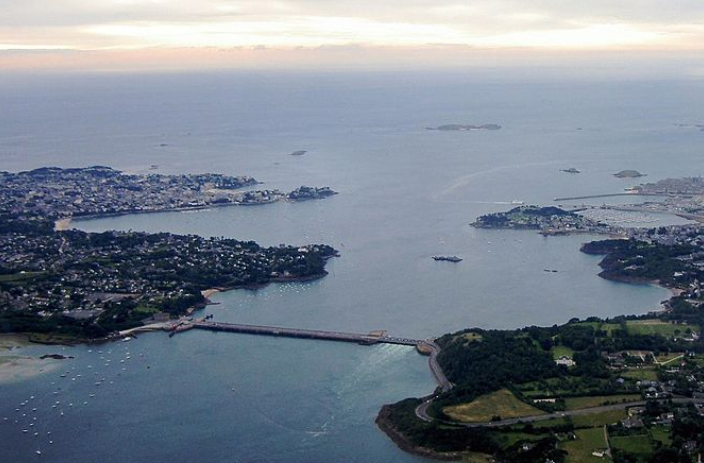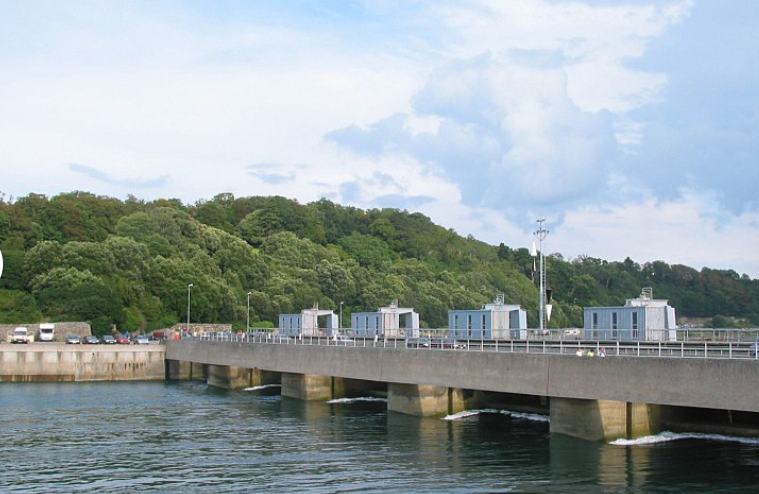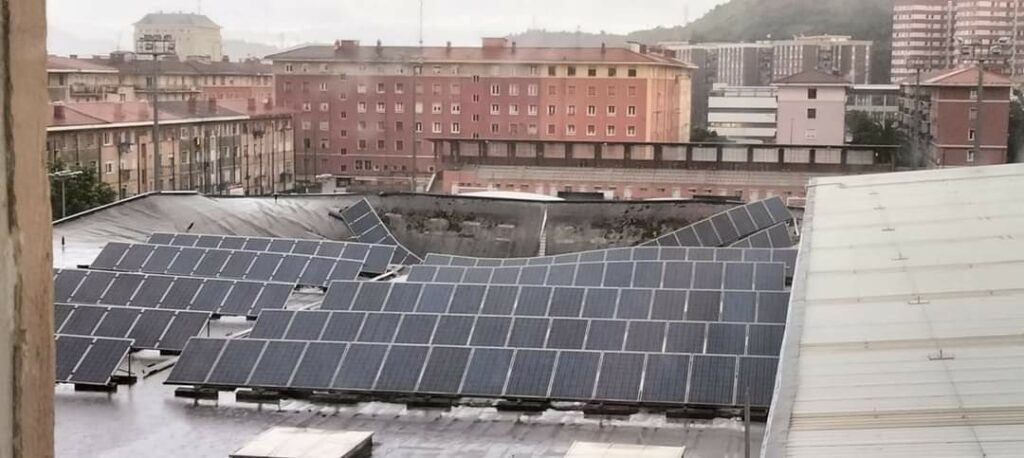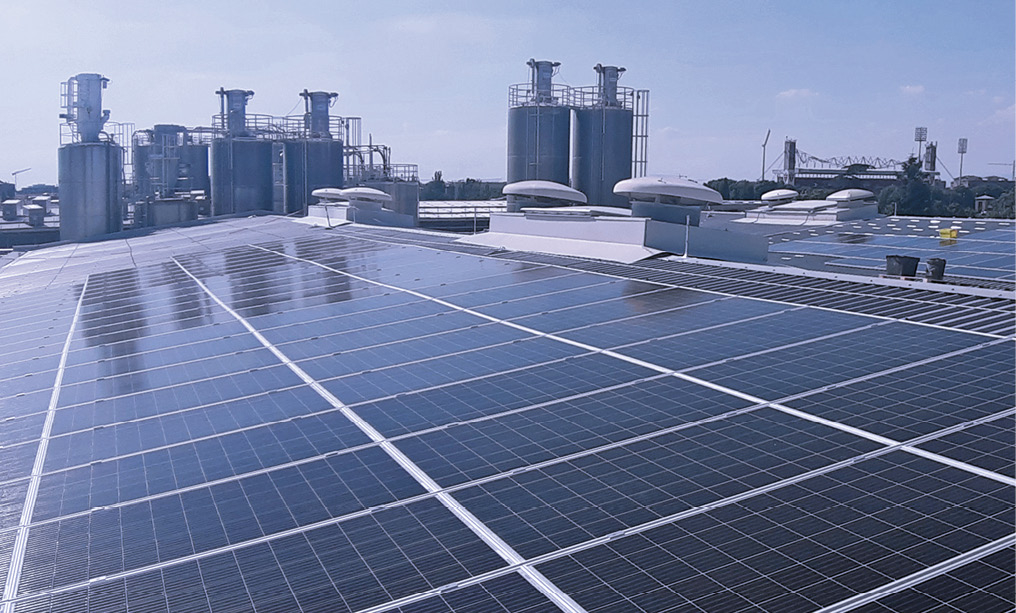Tidal energy has faced huge challenges in an effort to obtain large-scale adoption, with many arguing that it cannot be made economic. But an often overlooked benefit is the huge lifespans of the technology, as typified by the La Rance power station in France. Scarlett Evans takes a look at the grandma of tidal power.

La Rance tidal power station in Brittany, France is the oldest tidal installation in the world. Opened in November 1966, it was the first operation to deploy tidal power as an energy source and continues to provide a vital source of power for the region. Built by EDF across the estuary of the Rance River, the plant’s 24 turbines generate up to 600 million kilowatt-hours of power each year- equivalent to the consumption of a city the size of Rennes, France.
Global potential for tidal power is huge; with the World Energy Council estimating that up to 1,000GW of marine energy could be installed by mid-century – equivalent to half of the world’s present coal capacity. Yet the upfront construction costs of the tidal barrage, in addition to associated environmental impacts, remain major obstacles to further development of this energy source. Should we see tidal as a viable energy option?
A mammoth build
Tidal plants use a barrage to build an artificial reservoir, which helps to establish the differential in water levels needed to drive the turbines. The Rance river estuary was chosen due to its large tidal range –with the site actually boasting the highest range in the country with an average of 8m between low and high tide. In the spring and neap range, this figure can jump to as high as 13.5m. During the first two years of construction, two dams were built to block the Rance river, ensuring the estuary was completely drained and enabling the reservoir’s establishment across the site.
In total, construction time lasted five years. With an initial building cost of $100m, the station shows the high financial investment needed to develop such operations – the main reason for opponents to claim the energy source is less worthy of exploration than the cheaper alternatives of wind, solar or nuclear.

Yet the plant also shows the long-term rewards such stations can bring. While it took around 20 years to pay for itself, the project has now recovered all of its costs through savings made from its energy generation – and the tidal energy produced costs less than nuclear or solar power. Since its construction, the plant has produced approximately 27,600GWh of electricity, equivalent to around £3.3bn at today’s prices.
“Rance being the first barrage of its kind, I think it proves the arguments for tidal” says Professor Phil Hart, director of energy and power at Cranfield University. “I’m not sure how the lifetime economics have worked out overall but seeing as most energy projects have a life of 25-40 years and Rance is still going strong after 50 years plus with no signs of slowing down, it is difficult to think that it’s not paid for itself a few times over.”
“Tidal barrage’s painful expense is the very high cost of initially building the structure,” Hart adds. “However, once you have the civil works done the rest is pretty cost effective. The turbines are or can be very typical water flow turbines, such as those you see in many other applications. They have to be modified to work with sea water instead of fresh water (seawater being much more corrosive), but that’s just a materials and servicing issue.”
Why choose tidal?
A huge benefit of tidal is that it is predictable. Reliant on the movements of the tides, engineers have access to daily, bi-weekly, biannual and even annual cycles on which they can base predictions of energy production. In addition, inexhaustible energy can be generated both day and night with minimal influence from weather conditions. As such, some say it has great potential to be a main replacement for fossil fuel sources.
“Tidal barrage energy is pretty straight forward, incredibly predictable and environmentally carbon zero (or almost so),” says Hart. “All of these are really good and unusual things for energy production. How you would do it now is very similar to the way that Rance does it, though of course technology gets more efficient with time, and tidal barrage is no exception.”
“At Rance you can predict and rely on the energy produced, and know how much you are going to get when, hour by hour, day in day out, with 100% accuracy (neglecting any faults in the turbines). That’s a real strength when it comes to renewables, as most other forms are at the whim of nature.”
The design and operating principles are very well understood, having been developed over many decades, so challenges are fairly controllable. And when it comes to lifespan, Hart says tidal is leading the way.
“Barrages just trounce free standing turbines,” he says. “The structure is essentially life unlimited, because you’re constricting the flow and having high speed water around the turbine inflow/outflows, the design needs to be carefully done and maintenance and repairs are needed, but that’s a cost which is pretty trivial over a lifetime of 100 years plus.”
Are there any drawbacks? La Rance’s ‘major environmental impact’
Thomas Adcock, associate professor in the Department of Engineering Science at Oxford University says there has been ‘major environmental impact’ on the Rance estuary as a result of the station, saying “this would make it very difficult to get permission to do such a barrage again.”
Indeed, the barrage has been found to cause a progressive silting in the Rance’s surrounding ecosystem. Numbers of sand-eels and plaice in the area have diminished, though the river has seen the return of sea bass and cuttlefish. EDF has previously said it will attempt to mitigate this ecological impact, but general consensus seems to be that more research into the environmental impacts of tidal plants needs to be done for the technology to become a legitimate alternative to conventional energy forms.
Researchers from Cardiff and Liverpool University have previously published reports on how tidal power can negatively impact marine life by altering sedimentation patterns, as well as oxygen and nutrient levels in the water. Similarly, a report from IRENA says costs of fixtures to the seabed and maintenance and installation costs need to be brought down, while more extensive research on the materials and methodologies of tidal power is needed before the technology can come into mainstream use.







